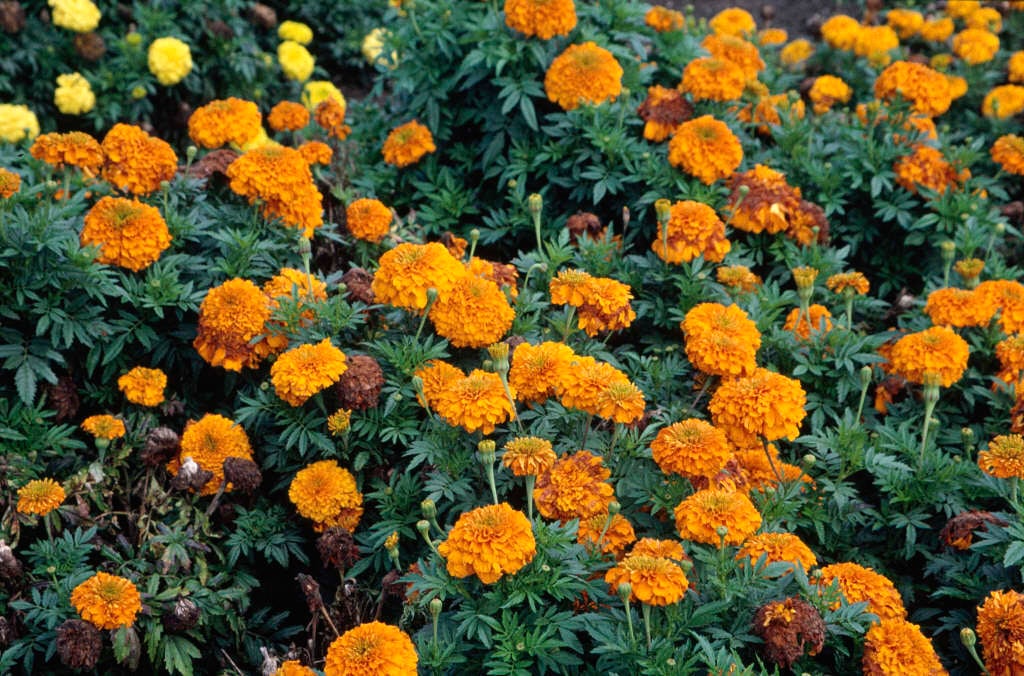Not the plant you're looking for? Search over 300,000 plants
Annual BiennialBedding
Size
Ultimate height
0.1–0.5 metresTime to ultimate height
1–2 yearsUltimate spread
0.1–0.5 metresGrowing conditions
Chalk
Clay
Loam
Sand
Moisture
Well–drainedpH
Acid, Alkaline, NeutralColour & scent
| Stem | Flower | Foliage | Fruit | |
| Spring | ||||
|---|---|---|---|---|
| Summer | Orange | Green | ||
| Autumn | Orange | Green | ||
| Winter |
Position
- Full sun
Aspect
South–facing or West–facing
Exposure
Sheltered Hardiness
H2Botanical details
- Family
- Asteraceae
- Native to GB / Ireland
- No
- Foliage
- Deciduous
- Habit
- Columnar upright
- Potentially harmful
- Foliage may aggravate skin allergies. Wear gloves and other protective equipment when handling
- Genus
Tagetes can be annuals or perennials of upright growth, with strongly aromatic pinnately divided leaves and showy daisy-like, single or double flower-heads in summer and autumn
- Name status
Trade
How to grow
Cultivation
Best grown in well-drained soil in full sun, best display in dry summers as flowerheads rot in wet weather
Propagation
Propagate by seed
Suggested planting locations and garden types
- City and courtyard gardens
- Patio and container plants
- Cottage and informal garden
- Flower borders and beds
- Garden edging
Pruning
No pruning required
Pests
May be susceptible to slugs, snails and glasshouse red spider mite
Diseases
Generally disease-free
Get involved
The Royal Horticultural Society is the UK’s leading gardening charity. We aim to enrich everyone’s life through plants, and make the UK a greener and more beautiful place.
